Gardens in Kansai, even if they look very ‘natural’ are carefully planned to make best use of the plants and seasons. Snow on conifers in winter, summer flowers in mid-year and colourful leaves in autumn. The Chrysanthemum Throne of the Japanese Emperor shows the importance of this flower to the Japanese people. The Imperial Seal of Japan is based on the chrysanthemum. The design can also be seen on the tile ends in many important buildings. The best time to see blooming chrysanthemum is in October.
Spring is the time to visit to enjoy cherry blossoms, Sakura. Don’t hope to taste the fruit in the summer though. These trees are bred for their flowers and any fruit is small and sour. The Sakura is the blossom of several types of cherry tree, particularly the Japanese cherry, Prunus serrulata.
Hanami, the Cherry Blossom Festival, is celebrated over the brief fortnight the trees are in flower. The season varies depending on latitude, in Kyushu it’s the end of March. As the weather warms northwards, the trees bloom in Tokyo in early April and finally in mid-May in northern Hokkaido.
Our pick of Gardens in Kansai
Japanese gardens really benefit from the changing of the seasons, which offer a different kind of beauty year round. We visited in early September and enjoyed a range of gardens that ticked boxes for beauty, balance, colour and calmness.
Shosei-en Garden
- The garden is under the care of Higashi Honggangi temple, about ten minutes walk east of the temple.
- A beautiful mansion originally in the garden has been lost to fire in the 19th Century.
- Entry ¥500, but don’t think of having a picnic. Eating or drinking is not allowed in the gardens.
- The Shinsetsu-kyu (Snow-capped Bridge) and Ingetsu-chi Pond will be open at the end of October 2017 following renovation.
- Visit the Shukuen-tei Tea House at the eastern side of the garden on a small hill. Use the Kaito-ro, a Chinese corridor-style Bridge or the Shinsetsu-kyu to reach the teahouse.
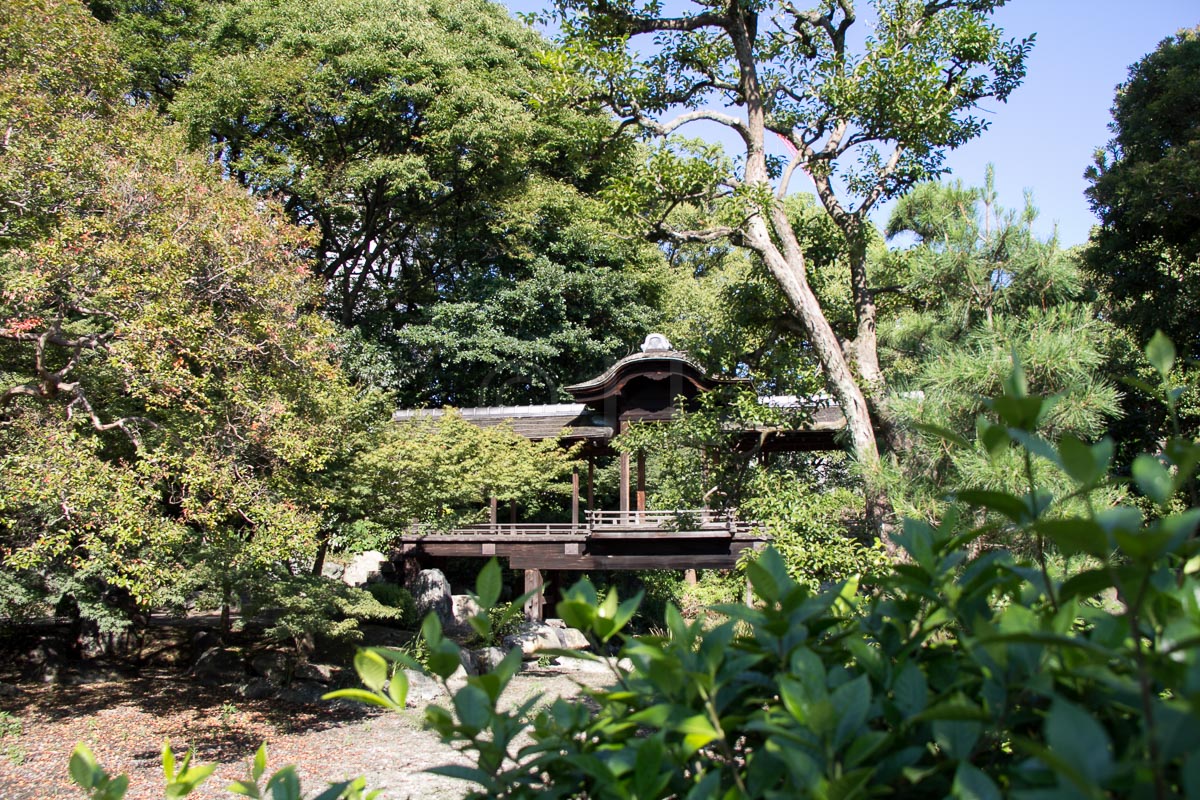
Santo Palace gardens, Kyoto
- Santo Palace is located in the Imperial Palace Park to the South East of the Palace.
- The gardens are open only for guided tours.
- Free tours are available for foreign visitors.
- You must sign up personally to book your place and show your passport for entry.
- The tour is in Japanese, you need to collect a free audio guide at the meeting point.
- The tour takes an hour. You must follow the guide and complete the whole round.
- There are two teahouses in the gardens.
- The Seikatei teahouse overlooks the South Pond, at the south end of the garden.
- The building design was inspired by the work of the 8th Century Chinese poet Li Bai (Li Bo).
- Yushentei teahouse dates from the late 1800s. It features a thatched roof and a large round window. Check out the use of bamboo in the guttering and other features.
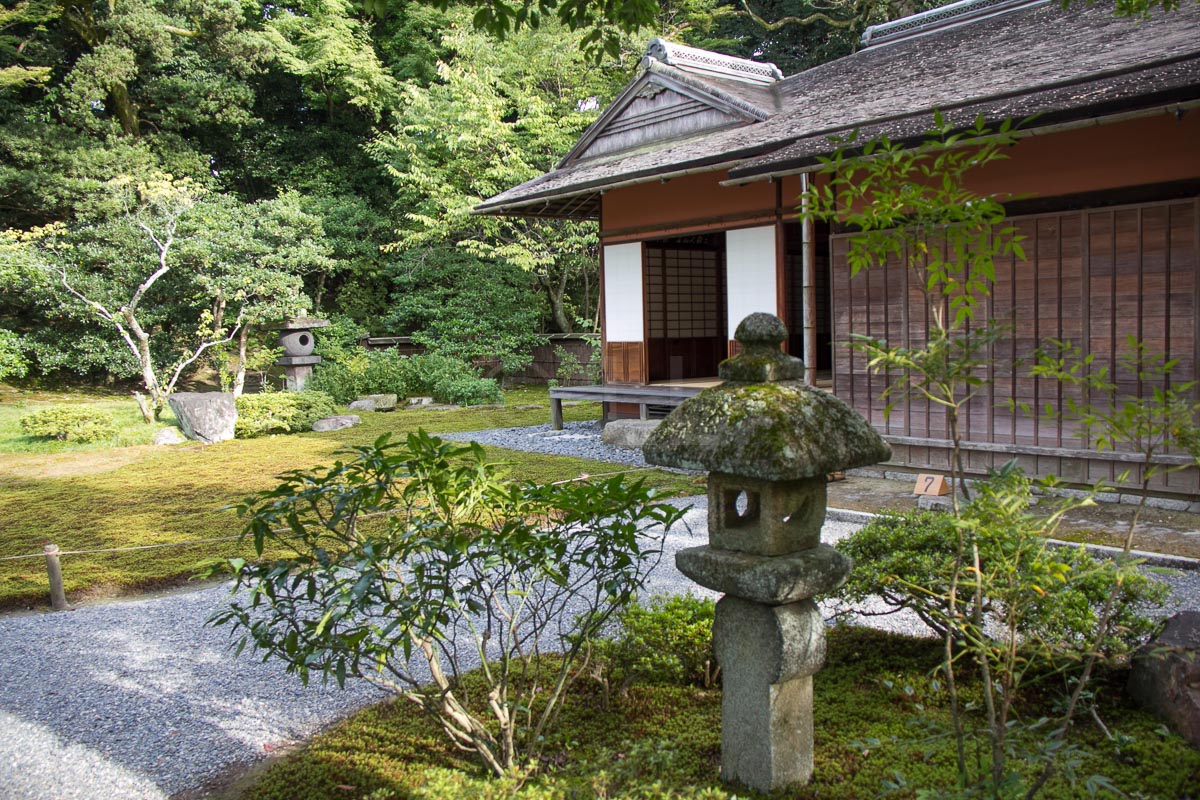
Imperial Palace gardens, Kyoto
- Entry is via the Seishomon Gate on the west wall of the palace.
- The garden if free to enter but there is no access to any of the palace buildings.
- Security is tight. Visitors must wear their pass and follow the marked route.
- Not all features have descriptions, so collect a brochure at the counter as you enter for full information.
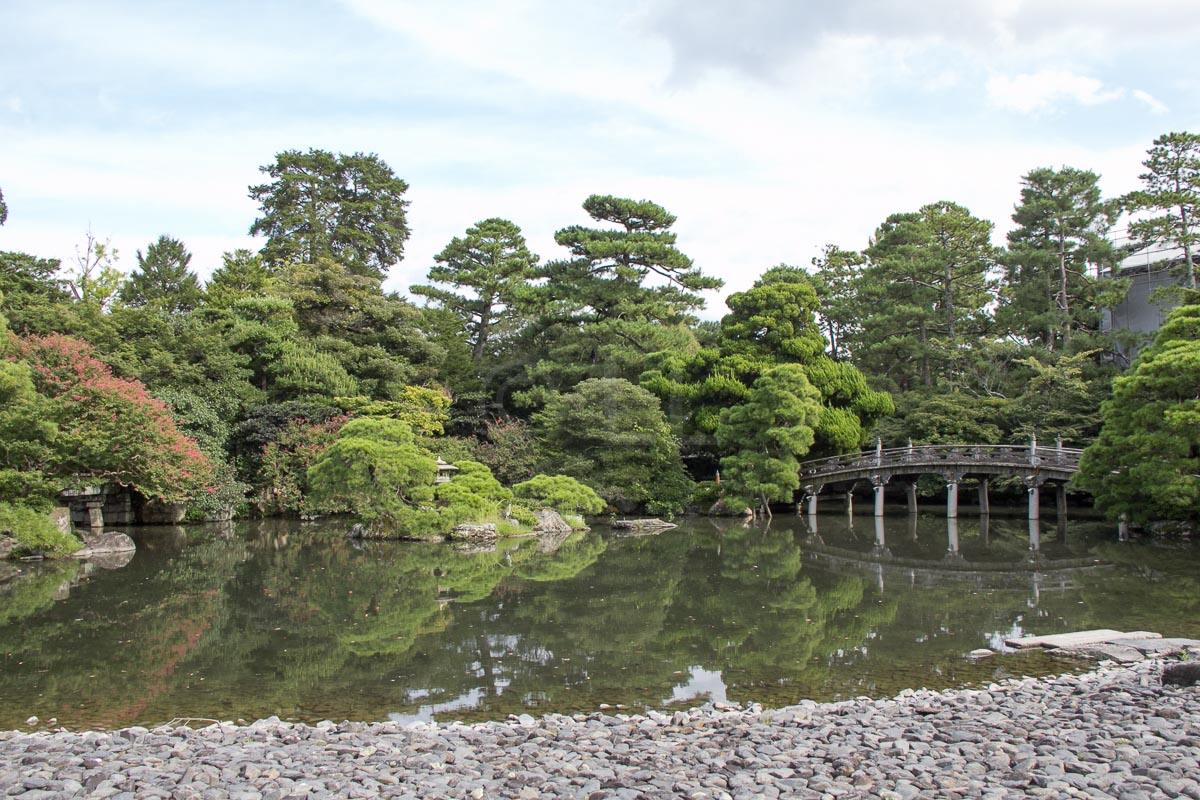
Yoshiki-en Garden
- Entry is free to foreign visitors.
- There’s a wide variety of garden types including a moss garden and a bamboo garden.
- Stop by Prince Shinkei’s teahouse overlooking the moss garden. The water basin and paintings on display are originals.
- The garden next door, Isuen Garden costs ¥900 per entry and includes entry to the museum inside the gardens.
- The gardens are closed on Tuesdays.
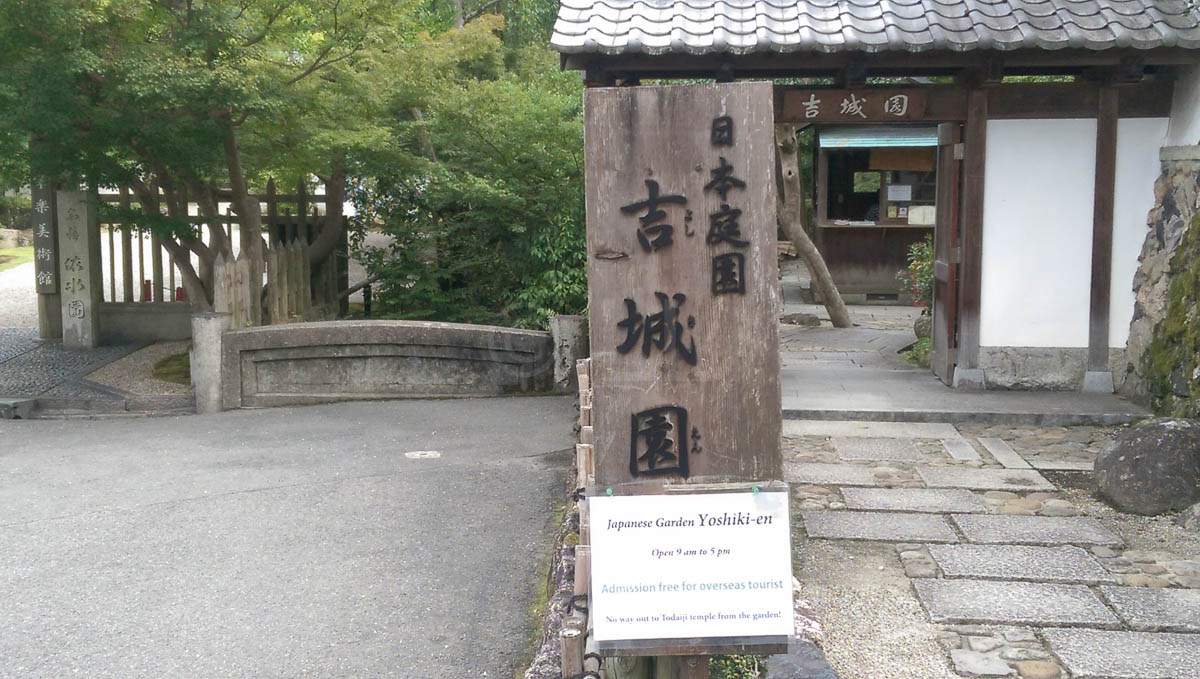
Himeji – Koko-en garden
- The gardens are relatively new, located to the west of the castle.
- Nine styles of garden spread across across the grounds. There are good descriptions, many in English.
- Buy your ticket as a bundle when you visit the Castle, that reduces the cost to only ¥40, from ¥300 if you visit separately.
- Look for the twisted trunk of the pergola close to the bamboo garden.
- Stop by Soju-an teahouse for a traditional served cup of tea and a matcha cake. This will cost ¥500 per person.
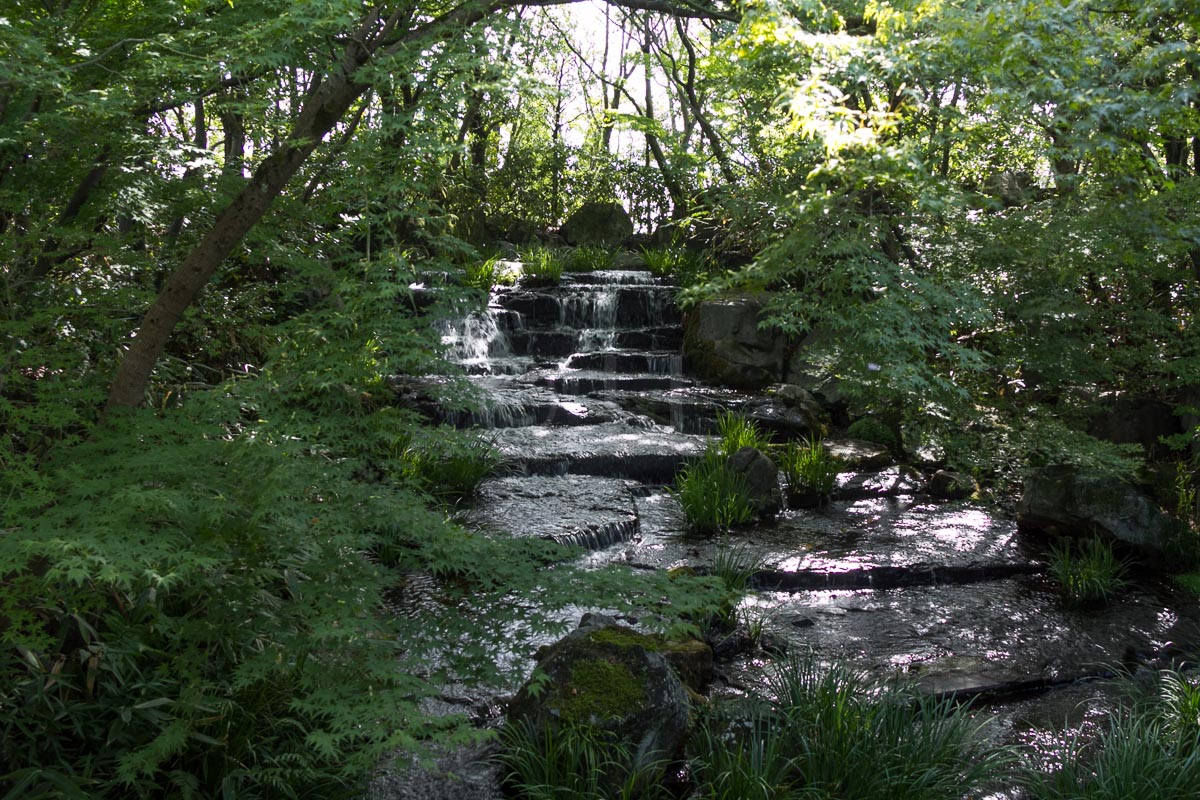
Kanchi-in Temple garden – Toji Temple
- The temple is just outside the North Gate of the To-ji temple in Kyoto.
- Kanchi-in was founded in 1359 as a sub-temple of To-ji, by order of the Emperor.
- Carefully raked white stones surround the temple. There is no grass.
- This garden has elements of a Zen garden, with precisely raked stones and rocks. The addition of bonsai softens the effect.
- Photos and video are not permitted, however, photographing the garden is allowed.
- View the garden and nearby To-ji temple from the verandah of the Kanchi-in Temple.
- Entry to the temple costs ¥500 for an adult ticket and ¥300 for a child.
- There is also a teahouse, serving a cup of tea and a matcha cake for ¥500.

Other gardens to visit
With a climate covering the four seasons, Gardens in Kansai are popular and varied. They are tucked in small and large spaces, each one carefully planned and tended.
Ryoan-ji Zen garden is the most famous of this type of garden. The garden is located in north west Kyoto, in the grounds of the Ryoan-ji temple. There are no plants. Fifteen carefully placed stones sit surrounded by carefully raked white stones. The placement is apparently a mystery, certainly something to meditate on.
A number of gardens have a teahouse where you can enjoy a traditionally served cup of tea and a matcha cake. These generally charge ¥500 per head. At Ni-jo Castle the menu also includes other types of food if you’re looking for lunch.
You can find out more in our stories about the Temples, Castles & Palaces that are home to many of these gardens.
images © ET
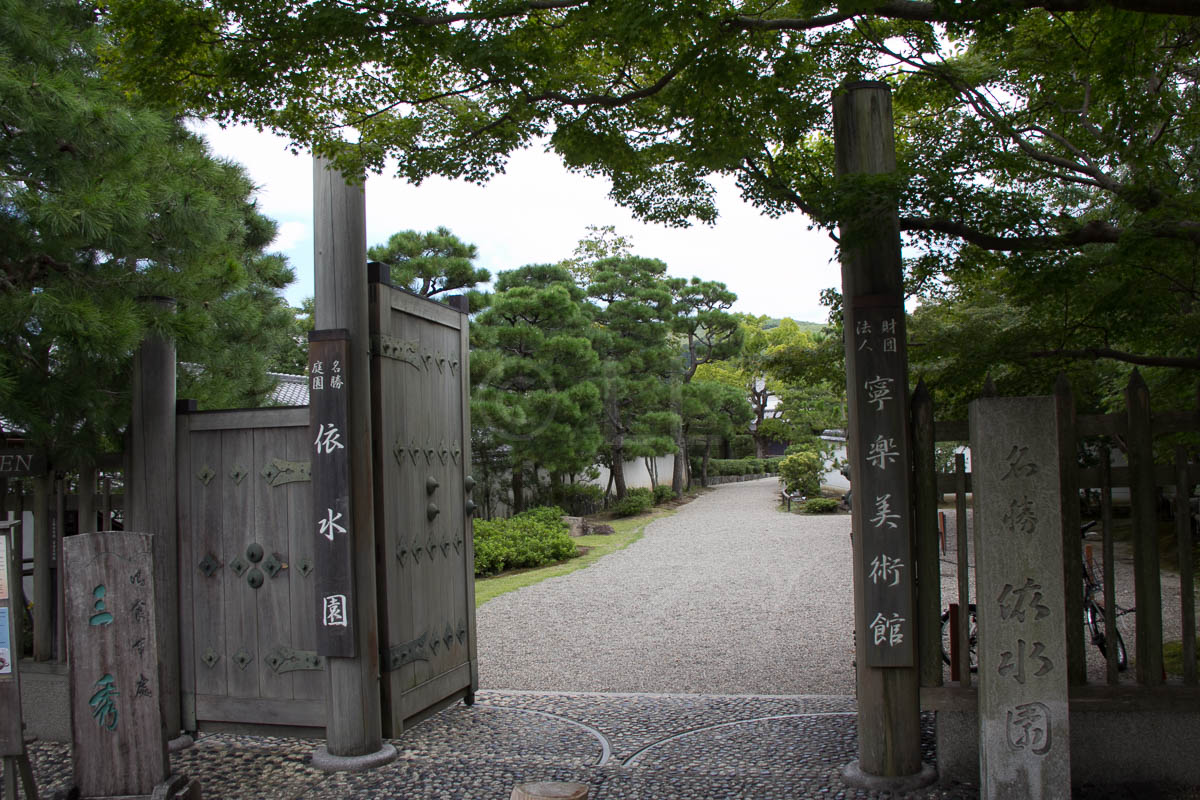






This Post Has 0 Comments